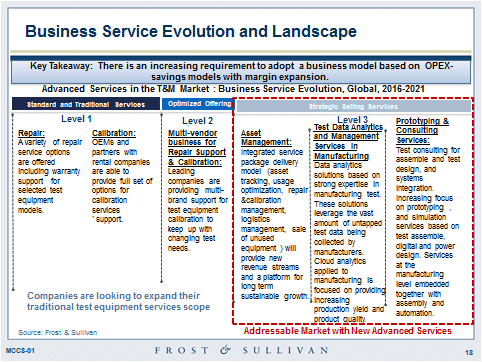We now live in a different era. Contrary to previous belief, the term disruption at present indicates challenging the assumptions to deliver new value to customers and generate new revenue streams beyond the constraints of an existing operating model. It is not test equipment versus test equipment anymore. Instead of focusing on hardware alone, nowadays test equipment focus on platform and ecosystem as well. There is a need to develop a platform-centric business model that effectively integrates hardware, software analytics, and services.
We need to understand the Convergence aspect.
The advent of advanced ICT technologies has been promoting new inter-relationships and interdependencies, giving way to business collaborations and partnerships in the future. Winners in the future T&M landscape will be those organizations agile enough to innovate under a data platform centric value. All T&M companies should adopt a robust data strategy. T&M manufacturers should aim to operate their business models through open partnerships with software analytics. New revenue streams can be generated through these synergies.
Business Service Evolution and Landscape
The service offering is evolving from the standard repair services, calibration, and multivendor test equipment calibration services to a more strategic and integrated service package delivery model.

Many end users are interested in more than one service offering. The T&M market has seen 3 key strategic services that companies are potentially looking for their future business expansion.
- One new area of services is data analytics services in manufacturing. These solutions leverage the vast amount of untapped test data being collected by manufacturers. There is a need to have comprehensive view of the production floor with detailed engineering data. Companies are looking into the implementation of a manufacturing process assurance as part of a new service offering. Users are willing to pay for services focused on identification of root cause of production issues and customized reports that are specific to the end customers. Users can look at yield split by a variety of parameters including how operators are performing, how is the production performance of each operator, actual test equipment used, current number of operators running the test, the environmental temperature, identification of low performance, and training identification.
- Second, the T&M industry has seen the increasing proliferation of prototyping and consulting services for assemble and test design, and systems integration. The T&M industry sees more collaborative ways of doing things where services companies can be managing an entire quality test program. The service industry is shifting from a reactive business model to a proactive business model. T&M companies should consider services offerings as soon as companies start designing their products, and support them with services into how the product will be assembled and tested in the early stages. This will require integrators to be part of the service solution and quality for design test.
- The other emerging service area is asset management services. As a global integrated service, its offering is well positioned to capture new revenue potential from such services and improve the business model used in the T&M market with its unique combination of analytics, and controlled procurement to reduce hidden costs. Asset management services are driving cross service selling opportunities introduced mainly via asset management. Leading companies are focused on providing an integrated service delivery of not only asset tracking but also rental and sales of new and used equipment as part of the same package delivery.
Last Thoughts
All T&M companies should adopt a robust data strategy. T&M manufacturers should aim to operate their business models through open partnerships with software analytics. New revenue streams can be generated through these synergies and open partnerships.
Customers are moving from fixed CAPEX-models to OPEX-models. The new service–based business in the T&M market is still in an initial stage, but growth is expected to pick up further in the coming years, as an increasing number of end users adopt analytical solutions. The value from a service-based business is expected to come from the need of monetizing the decision making and intelligence that can be extracted from the data produced by a platform centric business model that effectively integrates software analytics, hardware, and services.



